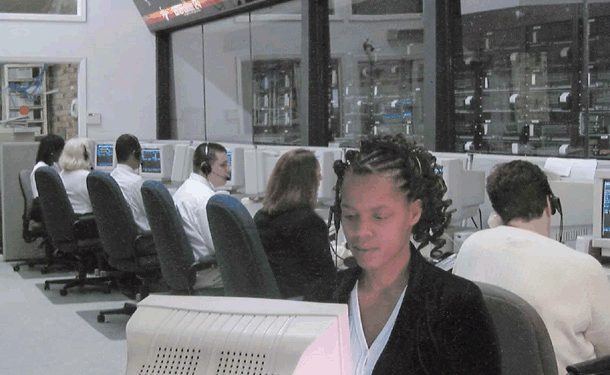
What is a monitored system?
MONITORED ALARM SYSTEMS

What is a monitored system?
Alarm systems which transmit a signal to a remote manned location are said to be monitored.
Our Monitoring Facility
National Home Security's monitoring facility meets the most demaning standards set by Underwriter's Laboratories and qualifies customers for the highest insurance ratings.
What are the types of monitored alarm systems?
Standard or One-Way
The alarm system transmits a one-way electronic signal,
usually via telephone lines, to the monitoring facility which in turn calls authorities
and notifies appropriate individuals. Ninety percent of the alarm systems are of this
type.
Two-Way Voice
Once the alarm signal is received by the monitoring facility, a
trained operator is able to listen-in and speak over special microphone/speakers to verify
the type of emergency before authorities are called.
Cellular Backup
Alarm signal is transmitted over cellular telephone network
should regular telephone alarm transmission be cut or out of service.
What happens during an alarm?
![]()
![]()
Standard or One-Way Systems
Once the main system siren sounds, the alarm system
seizes the telephone line and transmits an electronic signal to the monitoring facility.
This signal is coded to identify the customer and the type of alarm. The appropriate
authorities, usually police or fire, are called at once, the badge number of the
dispatcher is recorded, then individual(s) on the customer's call list are notified of the
alarm. All events are date/time stamped.
Two-Way Voice
The alarm system dials up the monitoring facility like a standard system, except the
two-way voice operator is able to remotely speak and listen over special
microphone/speakers. The operator asks what the problem is and for a password. The
operator then takes appropriate action based on the response. If the operator fails to
hear anything or in told an incorrect password, the authorities are called. The siren
automatically stops while the operator in connected to the alarm system.
What should you do in case of a false alarm?
Standard or One-Way Systems
Immediately disarm your system by slowing entering your code.
This while stop the siren and send a "cancellation" signal to our monitoring
facility to disregard the alarm. If the siren goes longer than 30 seconds, we may have
already notified authorities. In either case, you should call the monitoring facility,
identifying yourself with your account number and passcode, to verify the cancellation was
received or to have our monitoring facility try to recall the authorities.
Note: During an alarm, the security system is designed to seize the
telephone line for a secure transmission of the alarm signal. This may result in a
temporary loss of dial tone. After a brief period, the security system releases the
telephone line and your dial tone returns.
Two-Way Voice
Immediately disarm your system by slowly entering your
code. However for most two-way systems, the operator still comes over the
microphone/speakers to verify the status and ask for a password.
How do I test my system?
Before you test your system, please call the monitoring
facility and tell them you wish to test. You need to identify yourself with account number
and passcode. The best way to test is to put the system into full alarm and let the siren
sound for at least 30 seconds. Then disarm and call the monitoring facility to insure the
alarm signal is received. If signal is not received, please call our office to determine
the problem.
We urge you to test your system frequently, especially any time work or
changes are done to your telephone service or telephones. There is no extra charge for
testing.
How do I make changes to my call list?
Simply call the monitoring facility and the operator is happy to assist you. You may also call our office as well.
Alarm Menu
How alarms work Alarm design
Common alarm problems Service/additions/upgrades Pricing